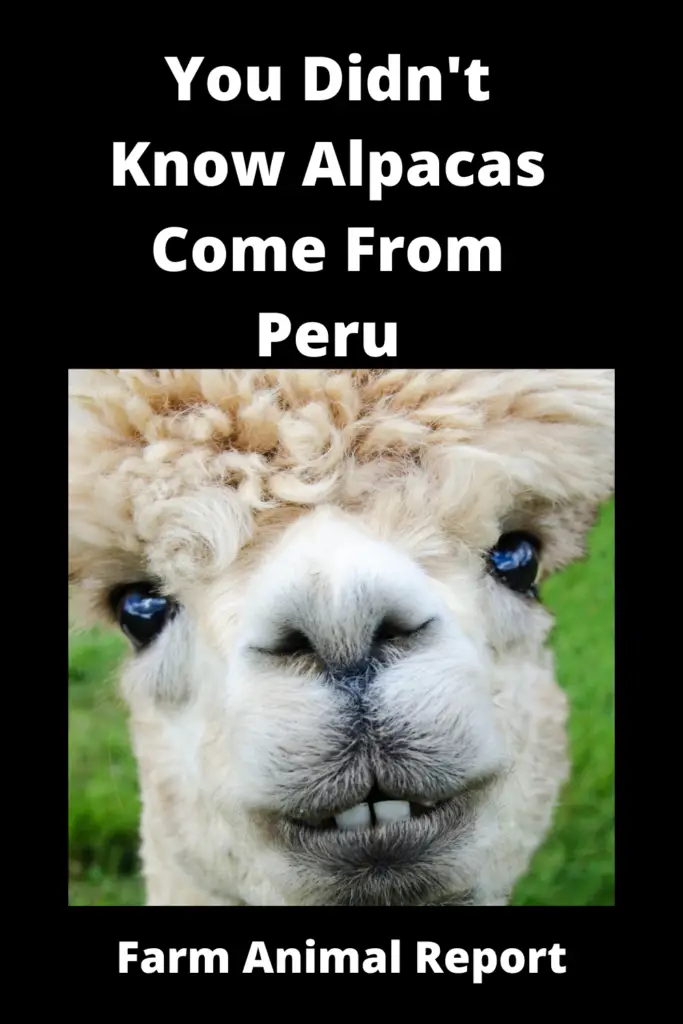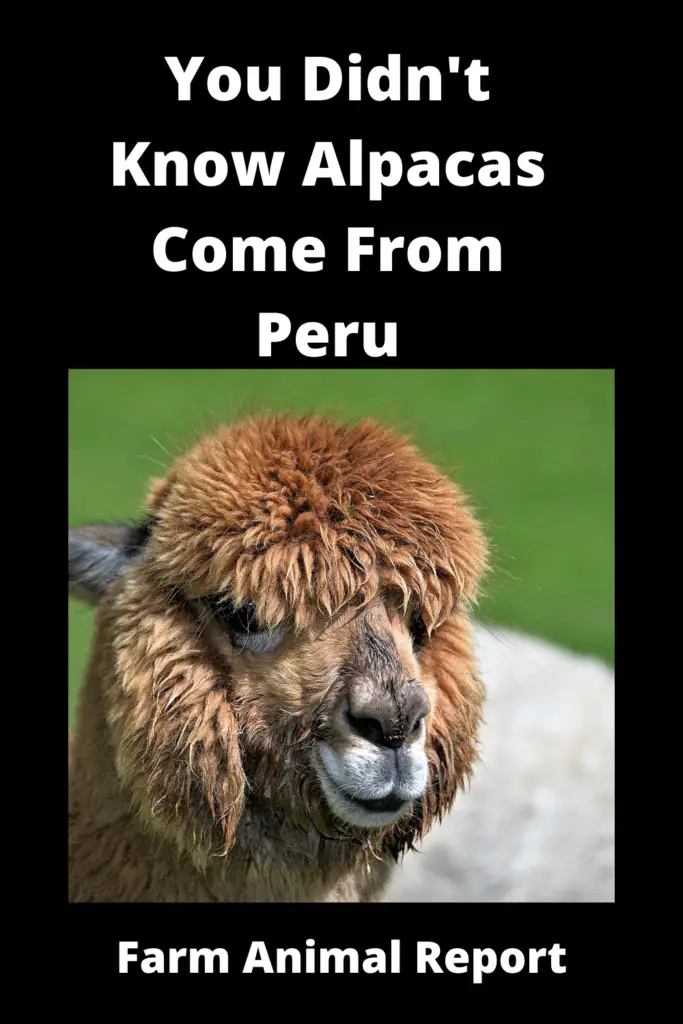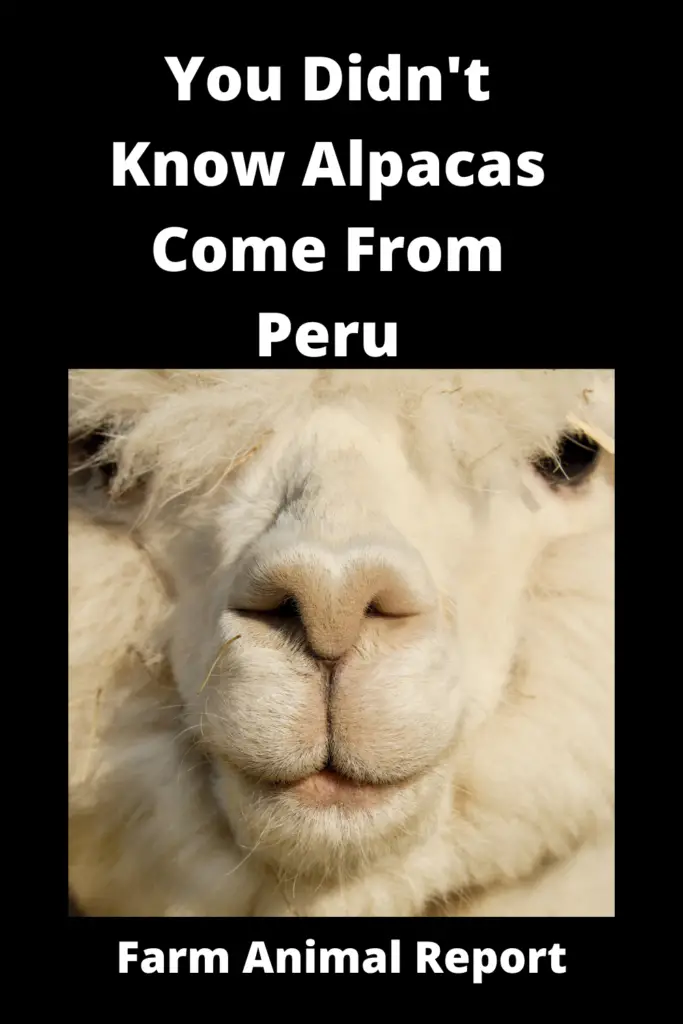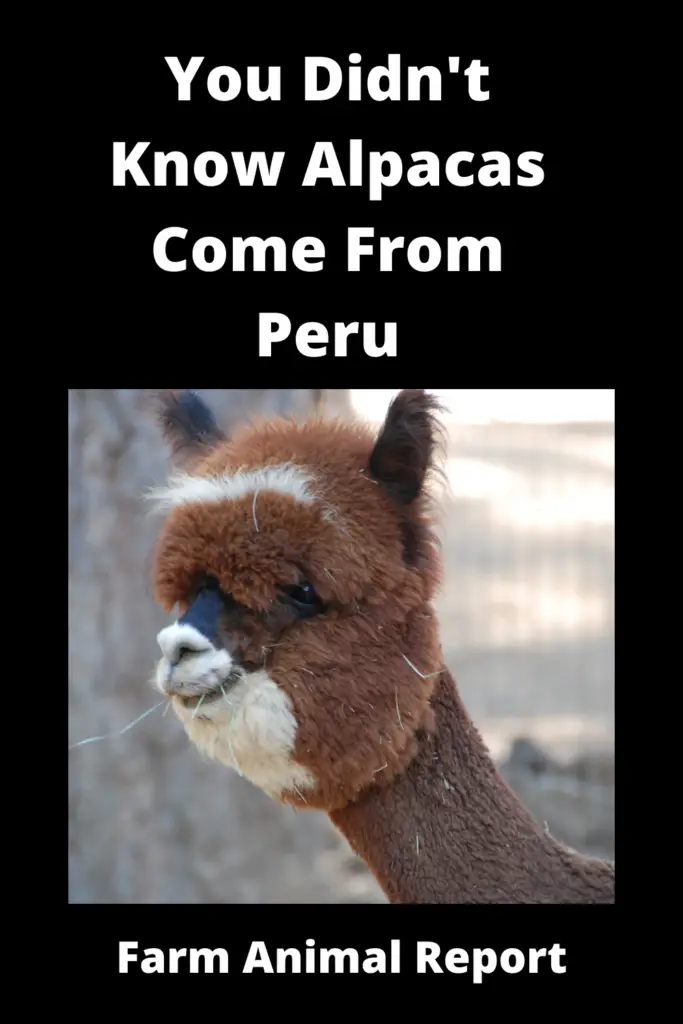Where are Alpacas From
Few people know alpacas originally came from Peru, (Where are Alpacas From) and even fewer know what alpacas do or where they live. Alpaca farmers in the United States are a rare breed, with less than 100 alpaca farms that produce alpacas for meat, fiber, and pets in North America. They are expanding as Alpaca fiber, wool is sought after
History of Alpacas – Where are Alpacas from?
The History of Alpacas reaches back to the Incas, who raised alpacas for their fur. Alpacas are related to llamas, but they produce less wool than the Suri alpaca. Alpaca fur is soft and delicate, which makes alpacas a favorite pet for people with allergies to wool.
Check Out Amazon’s Educational Resources for Raising Alpacas
Alpaca Origin – What Country is known for Alpacas?
Alpaca Origin – Alpacas come from Peru, but they are not aloof llamas! They have been domesticated by humans in the Andes Mountains since 6000 B.C., making alpacas one of man’s oldest pets. Alpacas are living, breathing stuffed animals. They come in two different breeds: alpaca and Suri alpaca. Alpacas produce less wool than llamas because their fur is softer and more delicate to the touch than that of a llama’s coarse hair.
Alpacas have been raised for over 5000 years by South American farmers for their alpaca fur, which is incredibly soft and luxurious. They are not aloof llamas at all – they have been domesticated by humans in the Andes Mountains since 6000 BC! Alpacas produce less wool than a Suri alpaca because their hair is softer and has a more delicate feel to it.
What did the Incas use Alpacas for?
Alpacas are a domesticated species of South American camelid. They’re related to llamas, vicunas, guanacos, and camels. Alpacas ( huacaya alpacas ) are kept in herds that graze on the level heights of the Andes of southern Peru, northern Bolivia, Ecuador, and north-western Argentina at an altitude from 3500 up to nearly 5000 m. Their habitat is called the alpaca lifestyle
18 ways Alpaca Farmers make Money
Alpacas have been domesticated for thousands of years – remains found in burial sites have been dated as far back as 2500 BC.

Where are Alpacas From – What did the Incas use Alpacas for?
Herding Flocks, fleeces, meat, and wool. Alpacas are quite small, they stand at about four feet tall whereas their cousin the llama stands at six feet. What makes these creatures so special? The Incas used alpaca for many different things, including herding flocks, fleeces, meat, and wool!
The Incas would have herded alpacas at a young age to train them. What makes these creatures so special? Alpaca fleece is very luxurious and warm, making it great for clothes! When the Spanish conquistadors came into South America they were able to get their hands on some of this fleece which made their clothes very luxurious and warm! What makes these creatures so special?
What made alpacas so important to the Incas was their fleece. What’s great about Alpaca wool is that it doesn’t collect static electricity like other types of sheep’s wool do, making them an even better choice for clothing material! The Incas would wear alpaca fiber garments during the cold Andean winter, and it is even said that they wore their clothing into battle. What makes these creatures so special?
Alpacas were also used for food when other resources grew scarce. What’s great about Alpacas meat is that its well-marbled with fat making it very tender meat. What makes these creatures so special?
Alpacas also helped to fertilize the land that they lived on, which was very important for farming. What’s great about Alpaca manure is that it has a high protein content and doesn’t contain any weed seeds! What makes these creatures so special?
The Incas used alpacas as a form of payment for tax, and also used them as a unit to measure wealth! What’s great about Alpaca fiber is that it can be dyed in an array of colors making different types of textiles from the alpaca fleece. What makes these creatures so special?
Alpacas have been around in South America for over 6000 years, and are still used by the locals today. What makes these creatures so special?
Where are Alpacas From – Are there Wild Alpacas ( Wild Species)?
Most all of the Alpacas have been domesticated today – in history, their populations had just about been wiped out from the Spaniards and also the disease they brought.
– This alpaca lives in the Andes mountains of Peru, Ecuador, and Chile. They have a thicker coat than other alpacas because they live at higher altitudes where it is colder. Their coats change color with the seasons from beige to grey during winter months when there is less food available for them to eat.
– The alpacas get their name from the Quechua word for ‘thorn’ because they were used by native people in South America to carry wool and items on trade routes between villages. The alpaca is a domesticated animal so it lives with humans, but wild alpacas could be seen roaming around if alpacas were introduced to a new environment without humans!

History of Alpaca Domestication ( Alpaca ranching)
Like many domesticated animals, alpacas were introduced to the local tribes of South America by traveling nomads. Although still not entirely known who first began domesticating alpacas, it is believed that they were likely used for their extremely soft wool before any other practical use was recognized. The Inca civilization became familiar with these fluffy creatures when they began to migrate into the Andean highlands in around 1100 BC.
Today, alpacas are still widespread across South America and have even made their way into parts of North American farming operations as well.
They were kept by nomad ranchers for their fleece and also as a beast of burden. These herds of alpacas were able to be driven long distances and even into the colder climates, unlike llamas who need a warmer climate in which to thrive. Alpaca fleece is much lighter than that of llamas and more suited for people with allergies to wool produced by sheep.
By the time Europeans came upon South America, alpacas were abundant and used extensively in the production of textiles. The Spaniards introduced their own breeds of sheep to South American which threatened the population of alpaca herds as they competed for grazing land.
However, despite this threat and a smallpox epidemic that killed thousands across Peru and Bolivia between 1713-1715, alpacas are now thriving once again. The population has recovered well and today there are around six million alpacas in South America alone.
History of American Alpacas
Alpacas can come in 22 natural colors, and this is what makes them so popular among alpaca farmers today. They have been genetically modified over time by selective breeding of alpaca herds.
Alpacas were brought over to the United States in 1984 when alpaca farms began popping up across North America. While alpacas can be found in the United States, they are still considered somewhat rare and exotic.
As alpaca farms began growing across North America, alpacas started becoming more and more popular as an animal to raise on a farm or ranch. Alpacas have been bred for their fiber since Incan times, which makes alpacas a great farm animal for farmers or ranchers who also want to produce their own fiber.
Alpacas are still considered somewhat rare and exotic, but alpaca farms have been increasing in numbers since alpacas were first brought over from Peru in 1984. Alpaca prices depend on the quality of the alpaca and alpaca breed, with alpacas producing high-quality fiber going for a lot more than alpacas that produce lower-quality fiber.
Alpaca Ranches in us today have grown in popularity in part because of the low cost associated with starting up an alpaca farm. Alpacas are often prized more for their fleece than as meat animals, so they command less money when sold at the market and can be purchased much cheaper than other livestock such as cows or horses.
They are also used by some farmers as guardian animals for their flocks of sheep or goats. Alpacas are known to have a very strong herding instinct, so they will often follow the sheep wherever they go and help keep them together as one herd.

History of Alpacas in Australia
The first imports were brought to New South Wales from Chile by William Hall in 1829. From there, they grew slowly in number and were first exported to South Australia at the end of 1845. By 1870 a total of about 40 alpacas had been imported into New South Wales from Chile and Peru by various owners, but The population grew slowly for some years as importations ceased during World War I (1914-18) and men who had returned from the war were reluctant to take up alpaca farming. Alpacas did not become popular in Australia again until after World War II (1939-45).
About 200,000 of these animals exist today and are primarily kept for their fine fiber which is used to make clothing such as scarves, wraps, and ponchos.
Where are Alpacas found in India?
Alpacas are found in parts of India such as Kerala and Tamil Nadu. Alpacas are also found in other parts of Asia including, Nepal and Peru.
Alpaca farming has grown rapidly over the past decade as an increasing number of farmers have turned to alpaca breeding for its high profitability
Alpacas as Livestock
Alpacas today are looked on as livestock because their
- diet consists of alfalfa, hay, and grain. Alpacas are typically
- pastured with cattle because the alpaca’s system is a three-chambered stomach model similar to that of a cow.
- They give birth to one alpaca, called a cria. Alpacas are shorn every year after the rainy season
- is over in April or May so that their fiber will grow long and strong for sale.
- Alpacas come in 22 natural colors including white, black browns, and grays with more than 300 shades
- of color in alpacas fleece.
- Their Fleeces are made into alpaca yarn and alpaca products.
- Alpacas can live up to 25 years old.
- – Alpacas can be shorn once a year and produce up to eight pounds of alpaca fiber.
- Alpacas eat alfalfa, hay, and grain just like sheep do so they are easy for farmers to raise together.
- alpacas are very social with humans and other alpacas.
- They require only the same type of care that sheep do, so they’re easy for even beginning farmers to raise.
- alpacas are relatively small animals, so they do not require large pastures or use much equipment.
- They are herd animals so they can be kept on farms with many different types of animals, sheep, goats, horses, alpacas, and cattle.
- Alpaca Manure helps fertilize pastures
- There are also many alpaca registries that manage the alpaca breed in their respective countries.
- female alpaca, male alpaca, baby alpaca (Crias) all have a very calm nature
Alpaca Breeding Lines – Showing Alpacas
Preparing an Alpaca Fleece
Preparing an Alpaca Fleece is a whole process, and it takes time.
It begins with the shearing of the alpacas in early spring before they have their babies or “cria” just like sheep are shorn once every year to produce wool for textiles. The very first thing that you need to do is called “blowing”. Alpacas are very clean animals, and they usually only blow their fleece once every year when preparing for the winter months of cold weather in some parts of South America where alpaca come from originally. So if you don’t shear your alpacas at least twice a year, in the spring and in early fall then you will end up with a whole lot of loose fiber everywhere.
The alpaca has two different types of fleece; one is called “down” which is normally only blows once every year (in such places as South America where they come from) during preparing for winter or cold weather.
The second type of fleece is called the “guard hair”; this downy fiber on alpaca is very similar to cashmere in texture and can be used for garments, hats mittens, etc… While the guard hairs are coarse and tough which are usually used in carpets rugs mats objects. So preparing an Alpaca Fleece is a whole process, and it takes time.

Are Alpacas and Llamas Related?
They are both members of the camelid family, which also contains camels and vicunas. Both alpacas and llamas belong to the genus “Lama”, within the subfamily “Leprinae”. However, this does not mean that they are directly related as species.
Alpaca DNA is more closely linked to guanaco DNA than it is to the DNA of llamas.
Llamas have been domesticated for thousands of years, while alpacas were only first bred in South America a few centuries ago.
Both alpacas and llamas can be shorn for fiber production, but only the alpaca is bred specifically for its fiber. Alpacas are kept in herds that graze on grasslands at high elevations (for example, above the tree line) throughout South America.
Llamas were originally bred as pack animals, and continue to serve in this capacity today.
Llamas are also used as guard animals for alpacas and llamas since they are very territorial and will protect other members of their herd from predators with whom they come into contact. Alpacas have been domesticated for thousands of years, while llamas were only first bred in South America a few centuries ago
Alpaca Species
Alpaca comes from the camelid family, ( south American camelids) like camels and llamas. There are two types of alpacas:
1) Suri Alpaca
2) Huacaya Alpaca
The Camelid Family also Consist of:
1) Llamas
2) Guanaco
3) Alpaca
4) Vincua ( wild vicuna )
Are Alpacas Similar to Camels? ( south american camelids )
Alpacas are often referred to as “cousins” of camels. It makes sense since they’re both domesticated animals that live in South America and have similar body shapes. However, there are some important differences between alpacas and camels! Alpacas are much smaller than camels, for one thing. An average alpaca weighs about 150 lbs., while an average camel can weigh up to 1500! Alpacas have rounded ears that stand straight up when they’re excited or curious, while the ears of a camel lay back against its head. Camels also have two humps on their backs
Final Thoughts
Alpacas are great creatures that have been used in South America for thousands of years!
What made alpacas so important to the Incas was their fleece. Alpacas were also used for food when other resources grew scarce. The Incas would wear alpaca fiber garments during the cold Andean winter, and it is even said that they wore their clothing into battle. Alpacas were also used for payment of tax by the Incas, as well as a unit to measure wealth! Which increased the alpaca population.


